A Noble but Bureaucratized Cause: How and Why Humanitarian Aid in Ukraine is in a Gray Area. An Investigation by Zaborona
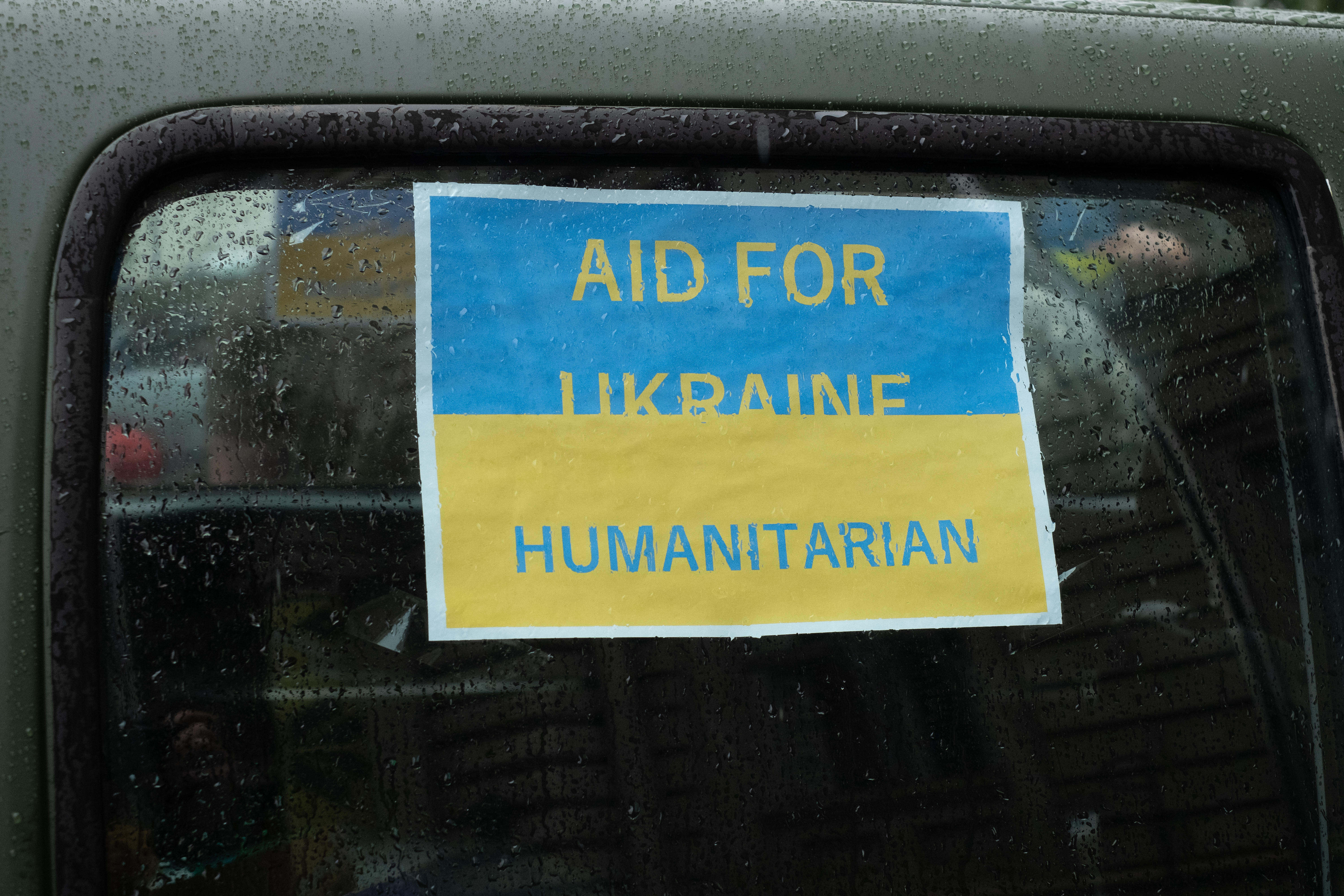
The destruction of infrastructure and logistics chains as a result of Russia’s full-scale invasion has led to a humanitarian crisis in many regions of our country. Ukrainians living in the immediate vicinity of the war zone and in the liberated territories found themselves in a situation where they could not meet their basic needs on their own. Ordinary people and organizations from all over the world came to the rescue, sending hundreds of tons of humanitarian aid of various types.
The process involved many participants: volunteers, charitable organizations, ordinary citizens, and the government. However, a significant increase in humanitarian aid attracted the attention of fraudsters who used empathy, imperfect legislation and weak control to enrich themselves.
For a long time, Zaborona has been researching how the humanitarian aid industry operates in Ukraine: communicating with government officials, heads of volunteer and charitable organizations, experts, and analysts, and studying hundreds of court decisions. All this to tell you how the humanitarian aid mechanism works today, what problems exist and, most importantly, what should be done to regulate this area.
Zaborona’s editorial team has no conflicts of interest and does not represent any party; the text is published on the website out of public interest. Zaborona is open to covering the position of any party to the investigation.
The Kakhovka tragedy: humanitarian aid, coordination
On June 6, 2023, at 2:50 a.m., the Russian Federation army committed another war crime and the act of ecocide by blowing up the dam of the Kakhovka hydroelectric power station. As a result of the reservoir spill, about 80 settlements ended up in the disaster zone. According to the Kherson Regional State Administration, more than 7,500 people became victims of high water, and more than 300,000 hectares of irrigated land were damaged. In addition, the drinking water supply was cut off in the northern territories of the Kherson region.
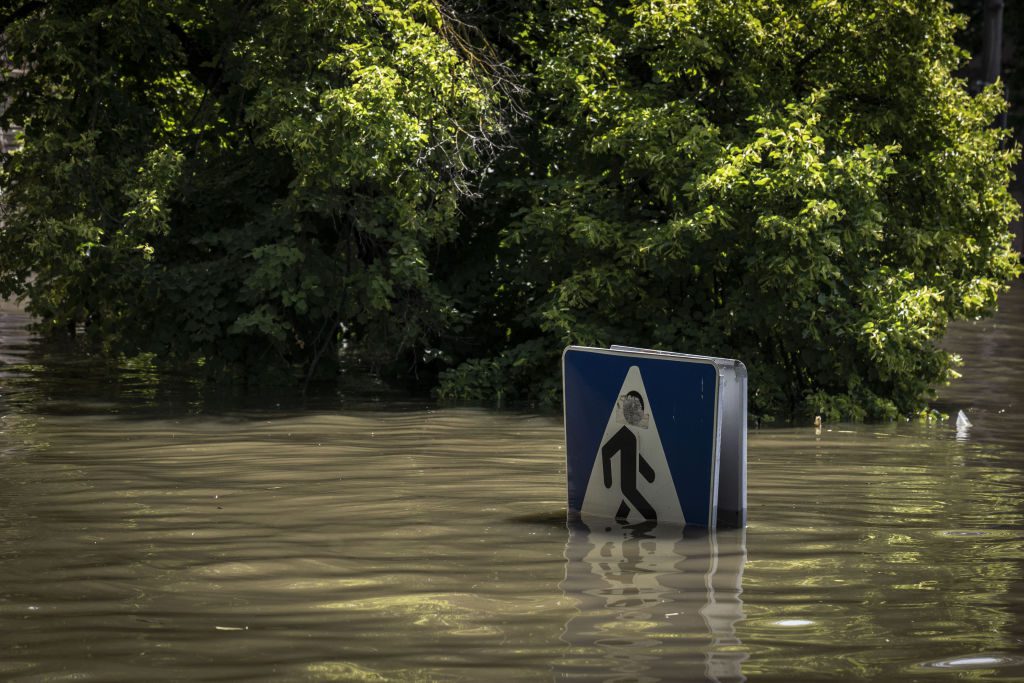
By the morning of June 6, all relevant services were involved in overcoming the consequences of the explosion and rescuing the population in the flood zone. Along with government agencies, many concerned non-governmental organizations, business representatives and ordinary people rushed to help. The process of collecting and delivering humanitarian aid and charitable donations began immediately.
Logistical challenges
Despite the fact that the large-scale war in Ukraine had been lasting for more than a year at the time of the tragedy, the government was not ready to deal with the consequences of the flooding. Those who were the first to arrive at the scene and began to help the local population speak of chaos: there was no coordination between local authorities and volunteers at the epicenter of the disaster. According to the activists, the large volumes of humanitarian aid and other goods that started arriving in the city were not distributed and sorted in time.

“The warehouses of Nova Poshta were overcrowded. We saw this aid… I understand that there was a desire to share everything you have, but many things were just someone’s outgrown wardrobe. The help that arrived and what people brought was not needed,” Yevhen, a volunteer with the Free Kharkiv charity foundation, told Zaborona.
Citizens and media people were involved in assisting, as they formed lines to enter the city and did not understand what they had to do, he says: “When we had to go to evacuate animals in the private area, people just went on very light inflatable boats, on mattresses, trying to take someone away. And then they had to be evacuated themselves.”
Lack of coordination
In his interview with Zaborona, Serhii Mukariz, executive director of the I Am Kherson charity foundation, recalls the chaos in the first hours after the tragedy of the Kakhovka hydroelectric power plant. He was also involved in helping to overcome the consequences of the flooding. Serhii also points out that one of the critical issues at the time was the lack of proper coordination.
“At one end of the city, there was a truck unloading food to all passersby. Volunteers from all over the country were coming to the square, either to show off or to really help,” he describes the situation in the first hours of the disaster.
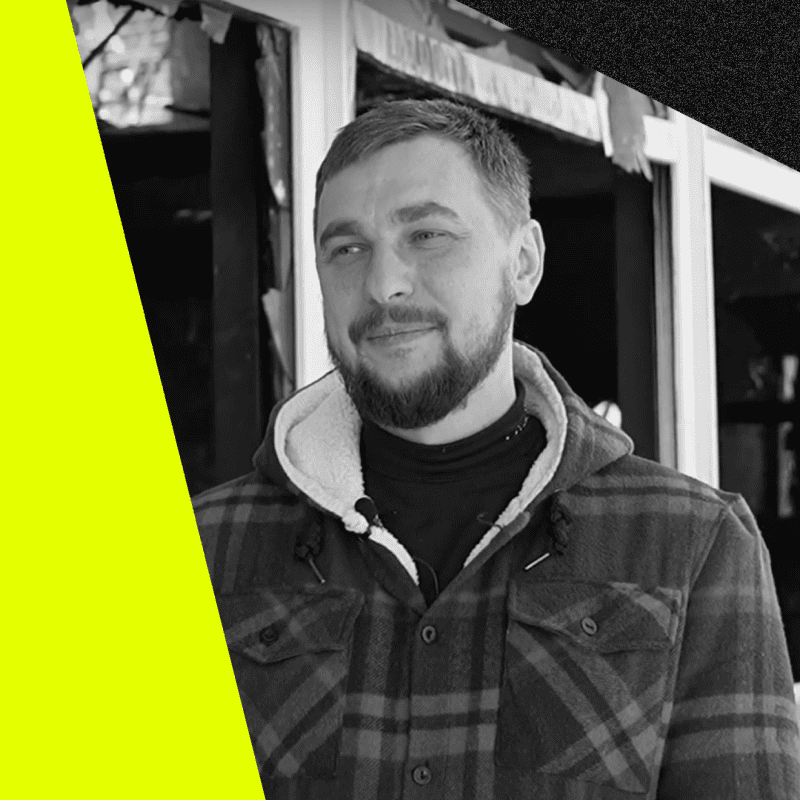
It took the authorities several days to set up at least some kind of workflow, which is why the peak period was full of confusion. Serhii describes further cooperation with the authorities in the foundation’s work more as a duty than a channel for help: “We rely only on ourselves; we cooperate with local authorities in terms of minimal coordination. We try to solve everything on our own — it’s faster and easier for us. And the project efficiency is higher.”
Serhii and his foundation are not the only ones who have helped local people without much coordination with local authorities. Many other organizations have also decided to provide assistance at their own discretion and not coordinate this process with the authorities. At the time of the Kakhovka hydroelectric power plant explosion, the Onuki Charitable Foundation cooperated with Nova Poshta, and all free parcels were sent to the warehouse. For the first few days, their main task was sorting, then the aid was sent according to the requests of the population. First of all, the requests of those who suffered from flooding were addressed: coastal areas, villages, and the Ostriv neighborhood.

Yehenii Bezuvenko, a former employee of the foundation, described cooperation with local authorities in an interview with Zaborona as follows: “We did not feel the need to ask the authorities for lists of those who need what. Our volunteers took care of it. No one personally contacted me, except for state hospitals.”
The authorities did not see any problems
Unlike volunteers and philanthropists, local authorities did not see any problems with the distribution of humanitarian aid after the Kakhovka hydroelectric dam explosion. Zaborona met with Volodymyr Kliutsevskyi, deputy head of the Kherson Regional State Administration: he notes that all those thousands of tons of humanitarian aid that arrived in the region after June 6 were distributed and reached specific consumers.
“From June 7 until the end of [2023], there were huge echelons of trucks bringing in humanitarian aid. It was promptly distributed among communities and delivered to local authorities,” the official says.

“A lot of humanitarian aid was brought in directly by charities, and we have always welcomed such an initiative — when charitable foundations, initiative groups, and public organizations delivered humanitarian aid to villages on their own, distributing it directly to people in their yards. And they independently controlled and saw that it reached the end consumer. People thank them for that.”
In fact, Kliutsevskyi admits that a large amount of humanitarian aid that came to the region was distributed without the participation and control of the state: “I would say that most of the humanitarian aid that came to Kherson region was provided by philanthropists who distributed it directly on their own, without the participation of the regional military administration, without the participation of local communities, with elements of self-control, independent decision-making on who to distribute it to, in what amounts.”

As for the humanitarian aid that came to the region through the Kherson Regional Military Administration, special records were kept of its receipt and distribution. According to Volodymyr Kliutsevskyi, the Kherson Regional Communal Emergency Rescue Service was responsible for receiving, accounting, controlling and delivering the aid.
“Full analytical reports, complete information – all this is available, it was controlled. And we can, let’s say, request this information and get a full answer as to how much, when and to whom all these material assets were transferred under the transfer and acceptance certificates,” he assures.
In addition to Kherson Regional Military Administration, representatives of Mykolaiv Regional Military Administration were also engaged in the delivery of humanitarian aid to the victims. They also assure that thanks to cooperation with many international partners, the priority needs of the population were met in a coordinated manner and in the shortest possible time.
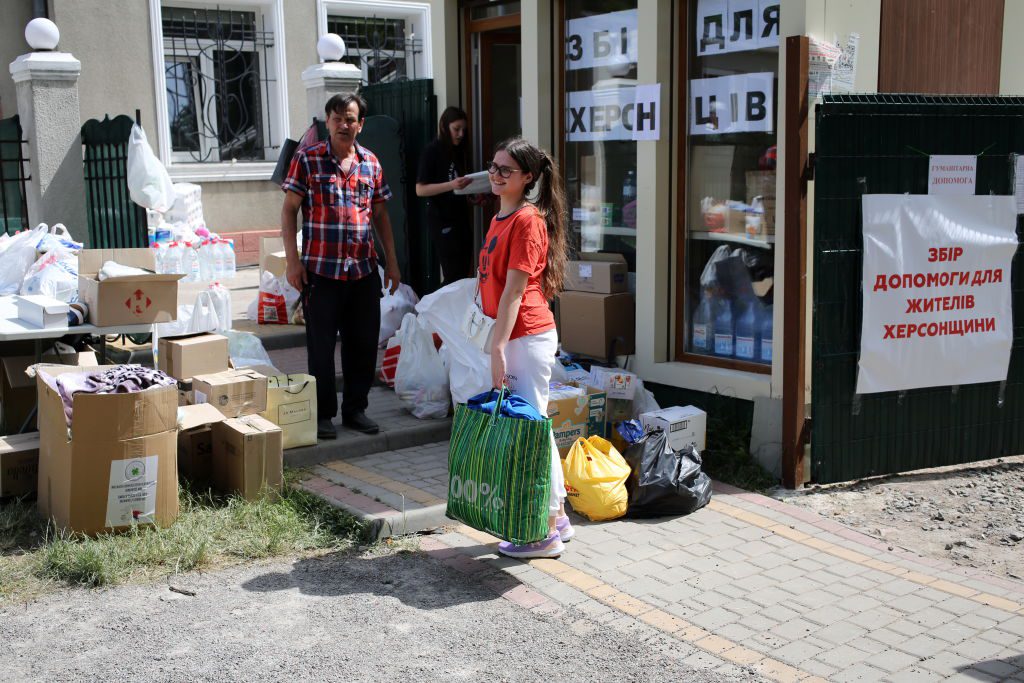

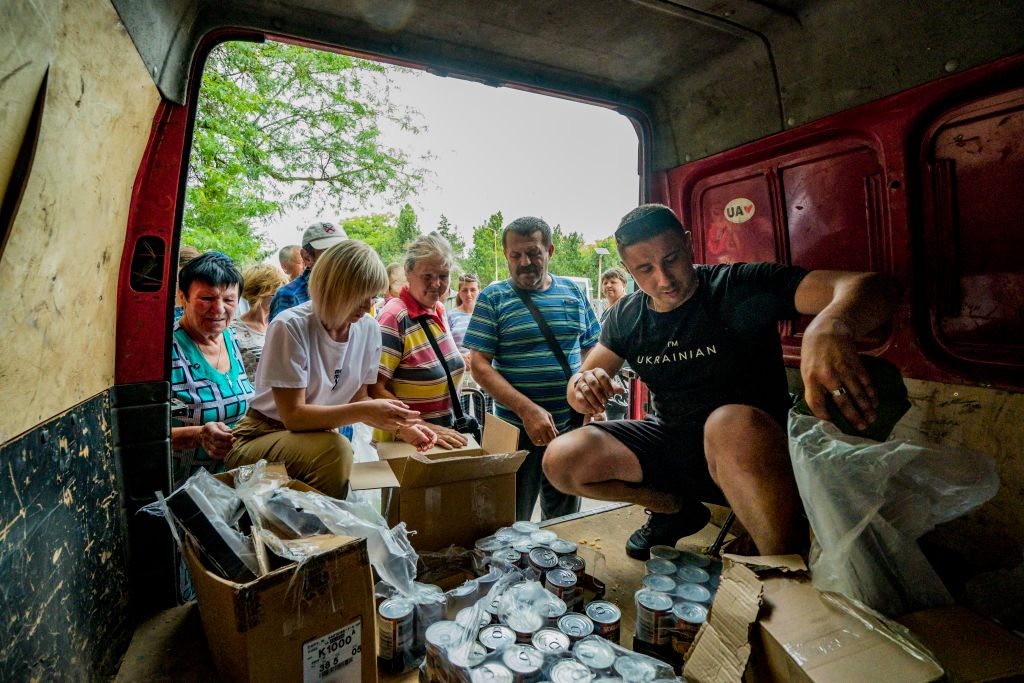
“We organized two evacuation centers at the railway and bus stations, where representatives of international organizations were on duty to provide assistance to the population,” Oleksandr Traitli, deputy head of the Mykolaiv Regional Military Administration, said in a response to Zaborona’s information request.
Transparency of work is questionable
Despite the assurances of government officials that the humanitarian aid that passed through their structures was monitored and accounted for, the question remains regarding all other aid that came to the region. And this is not a question of the integrity of individual foundations or organizations, but of a transparent structure of work that would make any abuse impossible, and which did not exist at the time.
According to Volodymyr Kliutsevskyi, deputy head of the Kherson Regional Military District Administration, control over the delivery of humanitarian aid to the population is exclusively within the framework of the benefactors themselves. In fact, this means that the state does not fully control the volume, destination and even distribution of the humanitarian aid that passes by the regional state administration, which can lead to abuse of the distribution of such aid at all levels.
Humanitarian aid: the gray zone
The problems that arose during the disaster after the explosion of the Kakhovka hydroelectric power plant were not one-off or caused by a specific situation. Unfortunately, all the drawbacks and shortcomings of the state in providing humanitarian aid are systemic. That is why violations in this area occur constantly. This is evidenced by the statistics of criminal cases.
In response to our request, the National Police provided the following data for Ukraine as of September 2023:
- pre-trial investigations were conducted in 861 criminal proceedings on the facts of illegal actions related to humanitarian aid, charitable donations and free assistance;
- 165 people were notified of suspicion of committing 175 criminal offenses of this category;
- indictments in 78 criminal proceedings were sent to court;
- the amount of material damage established amounted to UAH 40 million.
More than 200 other offenses were investigated under other classifications (fraud, misappropriation and embezzlement of property, theft, bribery, etc.). But they are also related to illegal actions with humanitarian cargo:
- theft – 25;
- fraud – 132;
- misappropriation, embezzlement or seizure of property by
- abuse of office – 24;
- abuse of power or position – 12;
- forgery in office – 10;
- official negligence – 3.
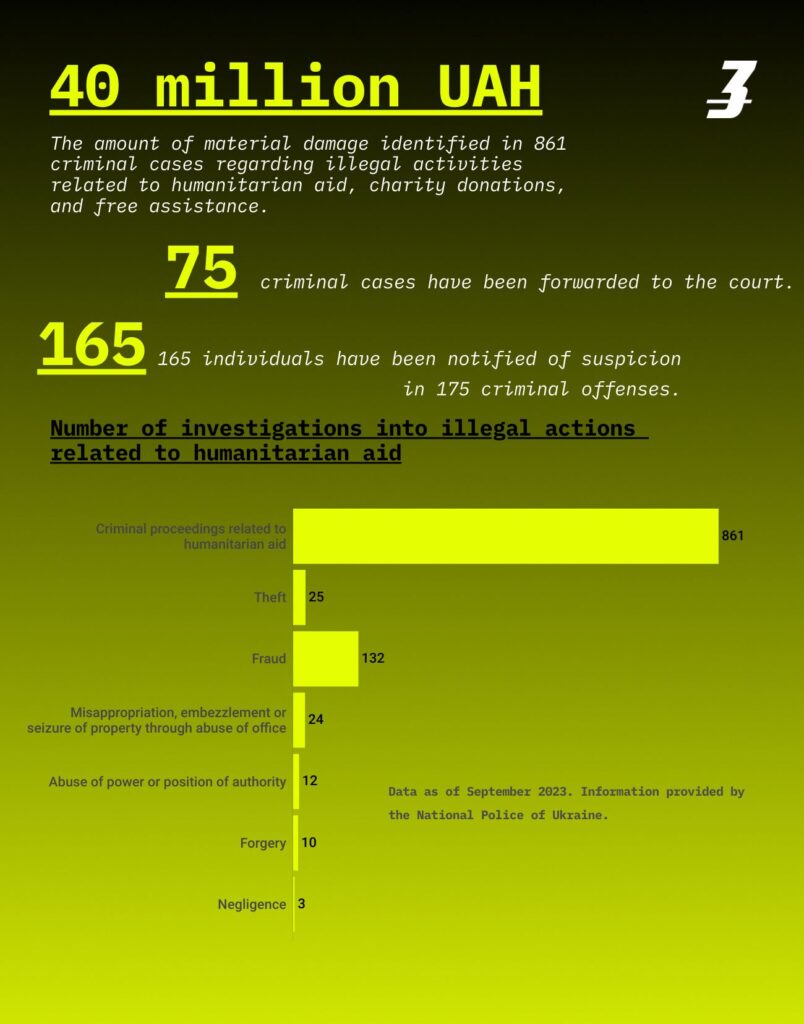
“Most often, socially important goods (food, clothing, etc.), charitable donations, military ammunition and vehicles are the subject of criminal encroachment,” Oleksandr Teslenko, Deputy Head of the Main Investigation Department of the National Police of Ukraine, said in a comment to Zaborona.
Zaborona analyzed more than a hundred court cases in the Unified State Register of Court Decisions. Geographically, most of the cases were opened in Kyiv and Kirovohrad regions. The lowest number was in Zaporizhzhia and Kherson regions.
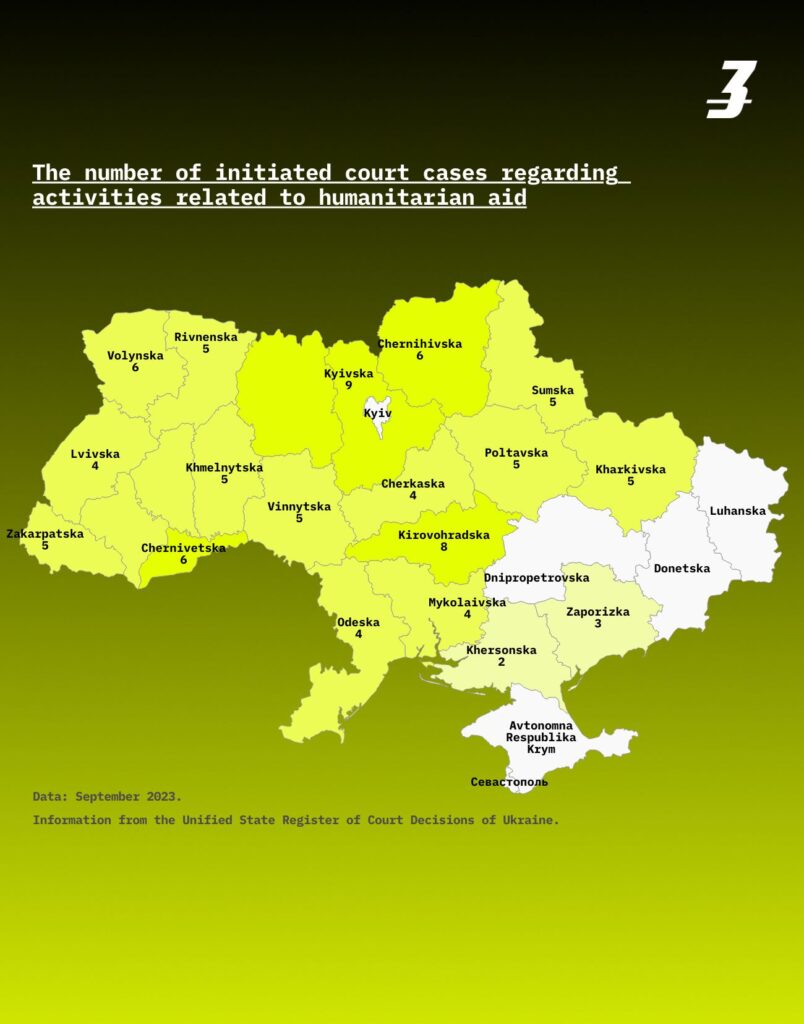
Most cases are initiated due to the sale or misuse of various types of aid. One case can be initiated under several articles at once, so the total number of articles is higher than the number of cases:
- sale or misuse of military aid – 44;
- sale or misuse of vehicles – 39;
- sale or misuse of food, medicines, personal care products, clothing, batteries, etc. – 26;
- storage of humanitarian aid that was to be distributed – 15;
- violations by state employees – 14;
- creation of a fund for the purpose of misuse of charitable donations – 4;
- entering false information in the declaration – 5.
In practice, a large number of court cases follow a fairly similar pattern: a foundation is created, assistance is received, and the assistance is not transferred for its intended purpose.
Schemes for the use of humanitarian aid: a case study
For example, in May 2022, the Charitable Foundation “Dobrochynets Ukrayiny” was registered in Kyiv. As stated in the court case, the foundation was immediately created for the purpose of further illegal enrichment of its founders.
“All their actions were aimed at selling humanitarian aid goods and using charitable donations for profit. At each stage of committing the crimes, each member of the organized group had to fulfill his or her role by performing certain actions. At the same time, without the active intentional participation of each member of the group, it would not have been possible to bring their joint criminal intent to an end,” the investigators note.
The case cites specific cases where, according to the investigation, the suspects stole humanitarian aid. As noted, a representative of the foundation agreed with representatives of several legal entities (LLC DNIPRO-SGEM, STC Enpaselectro Ltd, and the Consortium “Scientific and Production Association Ukrhydroenergobud”) to provide humanitarian aid in cash to the Charitable Foundation “Dobrochynets Ukraine”, supposedly to meet the needs of the Armed Forces of Ukraine.
Subsequently, the listed companies sent 245 thousand hryvnias to the fund’s account, allegedly to purchase items for the military unit. However, a part of these funds (205 thousand hryvnias) was transferred to the account of a private entrepreneur of one of the scheme participants as payment for children’s clothes. The latter cashed the funds and transferred them to another participant in the scheme.
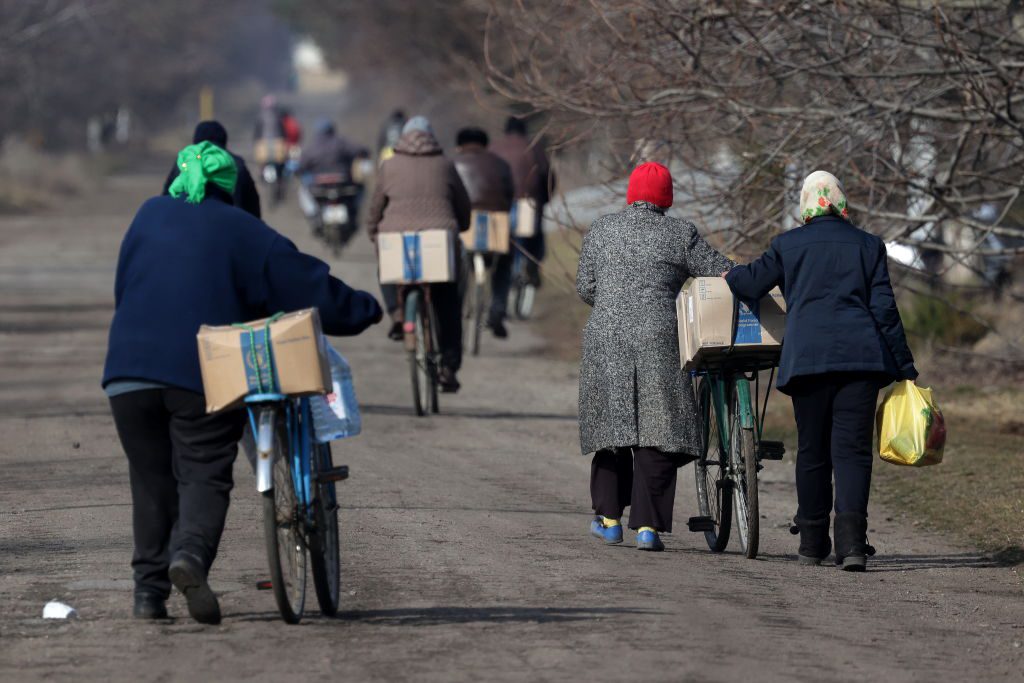
In addition, in early May 2022, a representative of the same fund agreed to supply milk from MK Halychyna LLC for the needs of the Armed Forces and vulnerable groups. Subsequently, a representative of the fund agreed to sell the products. The scheme participants received UAH 212,564 for this, which they divided among themselves. It is currently unknown how the case ended, as according to the latest data from the Unified State Register of Court Decisions, the head of the foundation was released on bail in the amount of UAH 130,000, and the latest ruling in the register states that the suspect’s detention was extended until 26.03.2023.
Zaborona’s investigators tried to contact the foundation’s representatives for comment and eventually got through to the company’s official phone number listed in the register, but they told us that they had never heard of such a foundation before, and after additional questions, they hung up and never picked up the phone again.
During the first nine months of 2023, according to the State Customs Service of Ukraine, more than 9,000 cases of humanitarian goods transportation were checked. In total, they were declared as aid for 200 military units. In about 3,000 cases, the goods never reached the military – a third of the total.
Civil servants are often accused of illegal activities with humanitarian aid. For example, in March 2022, the Italian organization Dipartim entodella Protezione Civile Presidenza del Consiglio dei Ministri sent humanitarian aid to the Chernivtsi Regional Military Administration. It included five ambulances: four Fiat Ducato and one Mercedes-Benz Sprinter 319 CDI.
Thereafter, the vehicles were registered to the charitable organization “‘Emergency Surgical Aid of Bukovyna’ Charitable Foundation”. As stated in the court ruling, “during the pre-trial investigation, it was found that the suspects began to use these vehicles to make a profit both for themselves and for other persons involved in the commission of the crime by transporting patients for their personal money.
According to the court decision, the vehicles were used by the director of the Charitable Foundation “Emergency Surgical Aid of Bukovyna” and the former CEO of the Chernivtsi Regional Clinical Hospital.

The YouControl database lists Serhii Petrovych Brodovskyi as the director of this charity, who was also the director of the Chernivtsi Regional Hospital, which suggests that they are the same person. Several officials of the Chernivtsi Regional Military Administration who participated in the process of illegal use of humanitarian aid, namely, were listed as recipients during the transfer, were suspected in this case.
The case of misuse of vehicles is not the only one involving Serhii Brodovskyi. The former head of the Chernivtsi Regional Clinical Hospital was involved in another lawsuit, also related to the misuse of humanitarian aid.
At the end of December 2022, the Shevchenkivskyi Court of Chernivtsi considered a case according to which the hospital headed by Brodovskyi received $246,000 worth of medicines and consumables from the Islamic Medical Association of North America. These medicines were also transferred as humanitarian aid.
As stated in the court ruling, Brodovskyi did not hand over the medicines and did not register them, but instead transported them to a private warehouse in the village of Chahor (Chernivtsi district, Chernivtsi region).
In February 2024, it became known that the court reclassified the violation as a crime committed out of negligence. Brodovsky was given one year of conditional imprisonment. Before the court made this decision, Brodovsky was threatened with two years of imprisonment.
Receiving and distributing humanitarian aid: what the state is doing to resolve the situation
Some cases initiated under Art. 201-2 “Illegal use of humanitarian aid, charitable donations or free aid for profit”, as we can see, do not end with sentences or real terms, but are reclassified or closed.
One of the reasons is that a large number of people and organizations involved in receiving and distributing humanitarian aid do not understand how the process should work. And they often make procedural mistakes that can lead to criminal proceedings.
The legislation is quite clear on what kind of aid can be recognized as humanitarian, who the recipients and donors are. However, the list of acts and responsible authorities is so long that it takes time to process it.
“There is a rather large body of legislation, including, in fact, at the level of legislative acts. To name a few, these are primarily the laws ‘On Humanitarian Aid’ and ‘On the Activities of Charitable Organizations’. One way or another, since humanitarian aid is a rather multidimensional phenomenon, the Customs Code, the Tax Code, the Code of Administrative Charity, the Law on Court Fees, and partially the Law on Citizens’ Appeals are also applied. That is, this is a rather large body of legislation,” Myroslav Lavrinok, an analyst at the Ukrainian Helsinki Human Rights Union, explains to Zaborona.

In addition, most of the people involved confuse the concepts of “humanitarian aid”, “charitable aid” and “volunteer activity”. All of them are intertwined, but they are not the same: each has its own rules and responsible authorities.
“When we read social media and see a call to donate money to an individual’s card, there are different rules, and it does not apply to humanitarian aid,” explains Lavrinok.
Volunteers interviewed by Zaborona note that a big problem is that the accounting and distribution of humanitarian aid is controlled by authorities that, due to the huge volume, are unable to do this work properly and communicate with donors. Communication between different organizations is also not enough for the system to work smoothly.

“What American companies are doing is not coordinated with what European companies are doing,” says Oleksandr Mazurkin, project manager at SALAR International. He adds that it is difficult to determine which regions and communities need to be provided with a particular product. This leads to a situation where large cities have constant and regular assistance, while communities do not receive the same amount.
Law regulating humanitarian aid activities
On November 8, 2023, the Verkhovna Rada of Ukraine adopted as a whole the draft law No. 3448 “On Amendments to Certain Laws of Ukraine on the Import, Accounting, Distribution of Humanitarian Aid, Peculiarities of Taxation of Relevant Transactions and Reporting”. The law came into force on January 23, 2024. This is an important document, as it should finally regulate activities related to humanitarian aid and update the rules to reflect current Ukrainian realities. It regulates the specifics of the import, accounting and use of humanitarian aid.
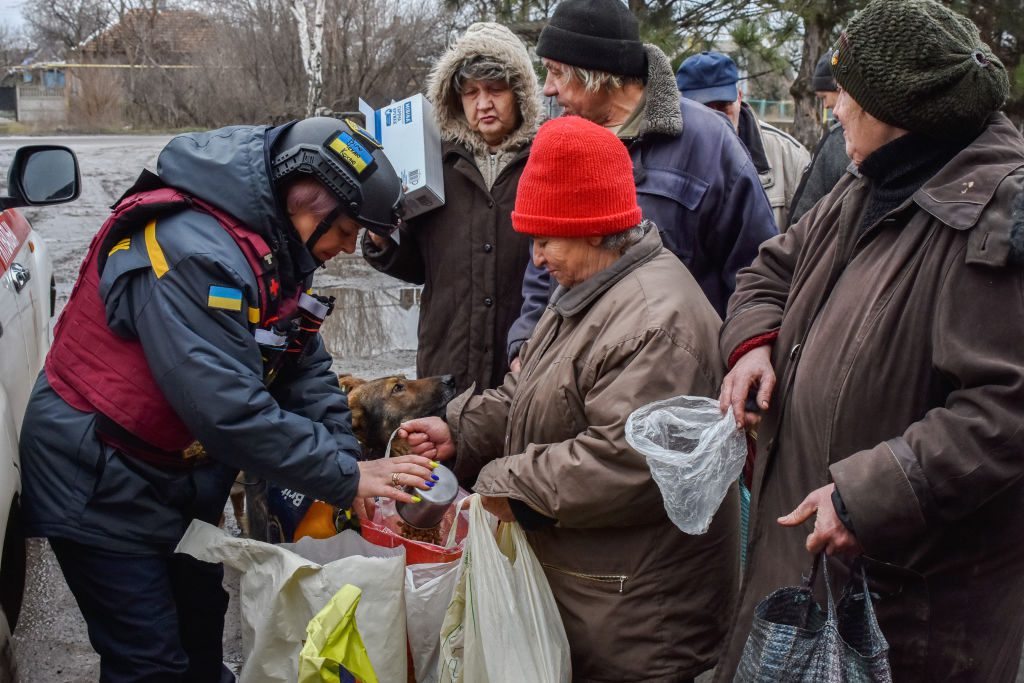
The main feature and most important part of the law is that it introduces a declarative principle. This means that humanitarian aid is automatically recognized as humanitarian if all the procedures required by this law are followed. Until February 24, 2022, those wishing to import humanitarian aid were obliged to apply to the authorized state bodies of Ukraine and go through the procedure for recognizing the aid as humanitarian. Subsequently, this provision was canceled by a separate resolution and now simplified in the law itself.
Registration of recipients
In addition, an Automated system for registering humanitarian aid was introduced, which allows filling in data on goods and generating declarations in electronic format (reporting is now required through an e-form). At first, this provision caused a lot of controversy, as not everyone was ready to switch from paper to digital reporting. Responding to the feedback from philanthropists and volunteers, the Cabinet of Ministers introduced a transitional period when reports were accepted in both versions. This period ended on April 1, 2024.
The registration process for recipients of humanitarian aid now looks like this:
- Registration of recipients in the unified register.
- Entering information describing the goods recognized as humanitarian aid through the unified state web portal (the window for international trade), the automated humanitarian aid registration system or in paper form at the state border crossing point.
- Automatic assignment of a unique humanitarian aid code.
- Passage of goods across the state border, customs clearance without payment of duty (takes place at checkpoints).
- Formation and submission of a report on the distribution of humanitarian aid (within 90 calendar days from the date of entering the information into customs clearance).
Electronic format
Despite the good intentions and standardization of many processes, the new rules have sparked a broad public debate. One of the problematic parts of the new legislation is the complete conversion of the system to an electronic format.
“The generalized risk of the new order is that all procedures will be digitized. Previously, everything happened at the level of paper documents: registration in electronic registers was not mandatory. Now it is practically impossible to receive or import humanitarian aid without registering in the relevant registers and completing all procedures electronically,” explains Myroslav Lavrinok, an analyst at the Ukrainian Helsinki Human Rights Union.
He emphasizes that many people are engaged in humanitarian aid without registering their activities.
“The problem is that the reality is not reflected in the legislation. Many individuals involved in volunteer activities are outside the legal field. With the introduction of the new procedure, these people found themselves in circumstances where they can no longer effectively provide humanitarian aid, as there is a high risk that they will not be able to go through all the stages of registration and recognition as recipients of humanitarian aid,” the expert comments.
However, the new law and the rules it introduces cannot be called bad or ineffective either. The government is trying to standardize and take close control of the humanitarian aid market in Ukraine.
Given all the problems in the industry, it was really worth doing. However, as often happens, the adoption of the new rules did not take into account the interests of all participants in the process. In this case, it was the interests of small organizations and individuals who have been honestly delivering and providing humanitarian aid to Ukrainians in need.
Problems of foundations
Yulia Yakovenko, deputy head of the Good Hope Foundation, notes that the problem with reporting is the difficulty in determining the amount of aid that will come from the population: “The question arises: do I want to take the offered help and then look through the documents to find out who to give it to?”

She talks about situations when it takes time to close a request and when the aid is already being provided, the needs become irrelevant. In this case, reporting on receipts and distribution becomes impossible. When delivering humanitarian aid to the military, there are also problems with documentation.
“We delivered drones. And I have not been able to get documents from the military for two months: they are moving, they are on rotation, their command is changing. I simply cannot submit a report,” says Yulia Yakovenko.
Foreign volunteers and philanthropists say they are ready to adapt to the new rules.
“We have been in this business for several years, so we understand that things are changing. I’m not going to talk about other organizations and the difficulties they face at customs control. We follow the law and order and adapt if necessary,” Maciej Baginski, the chief director of Polska Akcja Humanitarna, commented on the situation to Zaborona.
Control and tracking of humanitarian aid
The beginning of Russia’s large-scale invasion of Ukraine has certainly put the state and its institutions under a serious strain. The previously adopted rules and laws regulating the humanitarian aid sector in Ukraine proved to be ineffective in the new environment. The large number of criminal cases related to the illegal use of humanitarian aid is a vivid example of this.
It is not yet known to what extent the new legislation will be able to reduce the number of people willing to misuse humanitarian aid, but the issue of control remains open.
“The main authority that monitors the transparency and accountability of charitable foundations is the Ministry of Social Policy and the National Social Service,” says Lavrynok. “Each structure has different competencies. Tax authorities control the payment of all taxes, law enforcement agencies control whether humanitarian aid was used for its intended purpose, i.e. whether the law was not violated; the National Social Service of Ukraine monitors whether these goods, services, etc. are really humanitarian aid.”

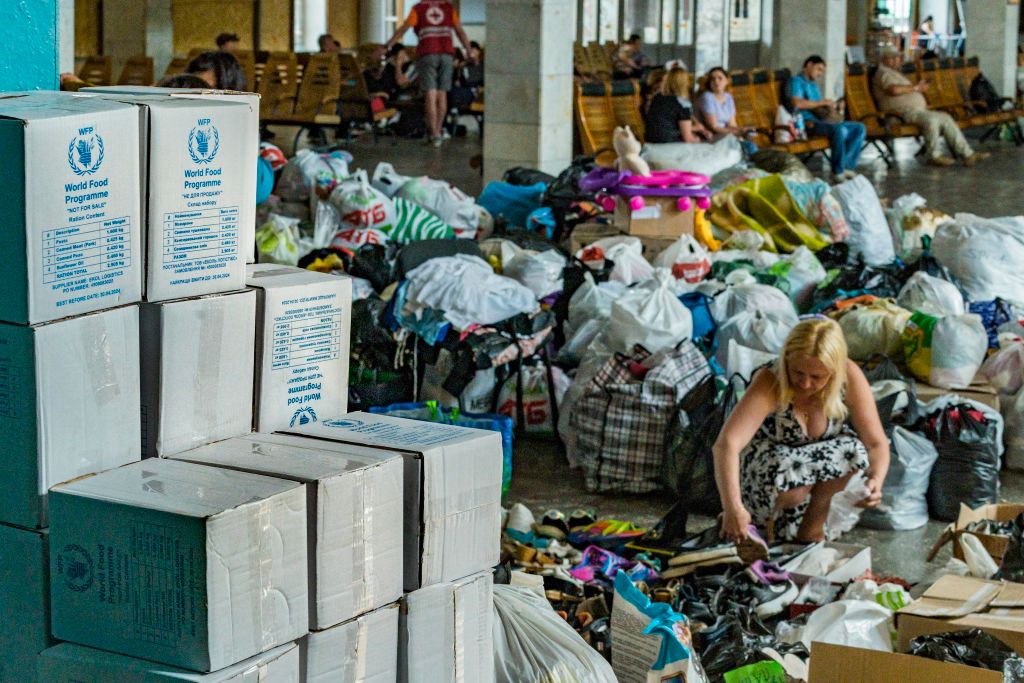
Given the huge volumes of humanitarian aid that continue to arrive in Ukraine on a daily basis, it is unrealistic to expect that the controlling authorities will be able to track the legality of all processes. And although the introduction of electronic reporting will make many things easier to control, much of the responsibility for the use of humanitarian aid will continue to rest with the funds themselves and other organizations that are directly responsible for distributing the humanitarian aid received.

This material was produced with the financial support of the European Union. Its content represents the sole responsibility of the EU4IM Project, financed by the European Union. The content of the materials belongs to the authors of Zaborona Media and does not necessarily reflect the vision of the European Union.




